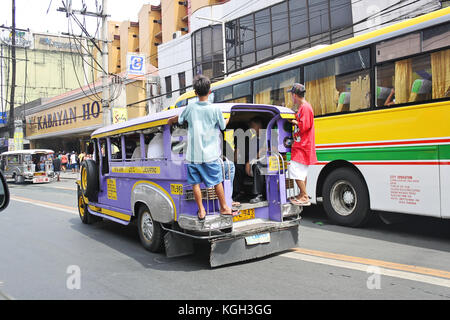Why Select Transit Advertising Philippines for Your Brand name
Why Select Transit Advertising Philippines for Your Brand name
Blog Article
A Detailed Exam of the Techniques and Techniques for Successful Transportation Marketing Campaigns
Transit advertising projects supply an one-of-a-kind chance for brands to involve with diverse target markets in dynamic settings. As we explore these important parts, it becomes clear that the path to an impactful transit marketing approach is both detailed and gratifying, elevating the inquiry of how ideal to navigate these complexities for maximum brand exposure.
Recognizing Target Demographics
Recognizing target demographics is critical for the success of transportation marketing campaign (Transit Advertising Philippines). Determining particular target market sectors allows marketers to tailor their messages effectively, making certain that the material resonates with the designated viewers. This method enhances interaction and maximizes return on financial investment
To effectively analyze target demographics, marketers should consider several vital elements, including age, earnings line of work, lifestyle, and degree preferences. For circumstances, a campaign intended at young specialists may concentrate on benefit and modernity, while one targeting households may emphasize safety and integrity. Additionally, geographical aspects such as metropolitan versus rural settings can substantially affect customer habits and choices.
Information collection approaches such as surveys, focus groups, and social media sites analytics supply valuable insights into demographic fads and customer habits. By leveraging this information, marketers can craft compelling narratives that align with the values and demands of their target market.
Eventually, recognizing target demographics not only notifies the calculated instructions of transit marketing campaign however additionally guarantees that resources are designated effectively. This targeted approach increases the likelihood of attaining project objectives, cultivating brand commitment, and driving conversions.
Imaginative Layout Techniques
Effective interaction with target demographics depends heavily on cutting-edge imaginative style strategies en route ad campaign. To efficiently catch interest in a crowded visual setting, designers need to prioritize clarity and visual impact. Making use of high-contrast components and strong shades can enhance visibility, making sure that messages are quickly understandable from a range.
Including vibrant images that reverberates with the target market is essential. Visual narration methods can stimulate emotions and create unforgettable associations with the brand name. Furthermore, strategic use typography helps communicate vital information swiftly; proper dimensions and understandable fonts better boost readability.
Including interactive elements, such as QR codes or enhanced truth features, can engage commuters beyond easy observation (Transit Advertising Philippines). These strategies not only advertise user interaction yet also connect the void between typical advertising and electronic engagement
Additionally, making use of room artistically-- whether on bus wraps, transportation sanctuaries, or metro advertisements-- can lead to innovative layouts that break the mold and mildew of standard advertising. By embracing imaginative creativity while maintaining brand uniformity, projects can foster a strong link with their target market, ultimately driving both understanding and action. The assimilation of these layout methods is extremely important for accomplishing successful transit marketing results.
Strategic Positioning Methods
Making best use of the influence of transportation advertising depends upon tactical placement methods that make sure ideal visibility and interaction. Effective positioning entails examining high-traffic locations and understanding guest demographics to identify one of the most helpful areas for ad display screens. As an example, placing ads near entryways and leaves of transit lorries can capture the focus of boarding and alighting passengers, hence improving direct exposure.
Moreover, utilizing both exterior and interior surfaces of transportation lorries can significantly broaden reach. Outside advertisements, noticeable during commutes, engage pedestrians and various other vehicle drivers, while interior advertisements target passengers in a restricted atmosphere. Furthermore, putting promotions en route hubs, such as bus terminals or train terminals, permits boosted impacts as commuters transition between various modes of transportation.
Timing is additionally crucial; aligning the campaign launch with peak travel periods optimizes audience interaction - Transit Advertising Philippines. Furthermore, leveraging electronic displays in transit atmospheres can assist in dynamic web content, improving and giving real-time updates individual interaction. By utilizing these critical placement techniques, marketing professionals can make sure that their transit marketing campaigns achieve optimal exposure, reverberate with the target market, and eventually drive desired outcomes

Determining Project Efficiency
To evaluate the success of transportation ad campaign, it is necessary to employ a range of view website measurement techniques that supply insights into target market involvement and general efficiency. One primary approach is using key efficiency indications (KPIs), such as reach, perceptions, and engagement prices, which measure the number of people viewed the advertisement and interacted with it.
Surveys and focus teams can also be important in evaluating consumer assumptions and recall, enabling marketing professionals to understand the impact of their messaging. Furthermore, tracking internet site traffic and social networks interaction throughout and after the project assists gauge straight reactions to the advertising and marketing.
Another reliable technique is making use of location-based analytics, which can offer data on foot web traffic around specific transit areas, using understandings into whether the campaign efficiently recorded the focus of travelers. Additionally, assessing sales information can reveal relationships in between transportation advertising and marketing and enhanced earnings, supplying concrete evidence of a project's efficiency.
Study of Success
Comprehending the efficiency of transportation marketing campaign via dimension techniques lays the groundwork for examining real-world examples that highlight successful end results. One notable study involves a national drink brand that made use of bus wraps in urban areas. The campaign aimed to enhance brand visibility and sales throughout the summer season. By employing geo-targeted electronic advertisements and analytics, the brand gauged a 30% rise in sales in areas where the covers were plainly displayed, showing the straight effect of transit advertising.
Another compelling example comes from a neighborhood not-for-profit company that released a project on subway systems to promote a community occasion. The company incorporated dynamic visuals with QR codes directing commuters to an enrollment web page. Post-campaign analysis revealed a 50% rise in event attendance compared to the previous year. Making use of direct engagement via technology intensified the project's reach and efficiency.

Conclusion
In summary, effective transit marketing campaign demand a detailed method that incorporates an understanding of target here are the findings demographics, innovative style techniques, and tactical positioning. By prioritizing emotional engagement via vibrant visuals and optimizing presence throughout height travel times, brand names can substantially enhance their impact. Additionally, recurring dimension of project efficiency with crucial efficiency indications and customer responses makes sure continual renovation. Jointly, these techniques foster brand presence and optimize the roi in transit marketing efforts.
Recognizing target demographics is crucial for the success of transportation advertising projects.Effective communication with target demographics depends greatly on innovative creative layout techniques in transportation marketing projects. By utilizing these critical placement methods, marketing experts can ensure that their transit advertising and marketing projects accomplish maximum exposure, resonate with the target audience, and ultimately drive wanted outcomes.
Recognizing the effectiveness of transit marketing campaigns via measurement techniques lays the foundation for checking out real-world instances that highlight effective results.In recap, effective transportation advertising projects demand a thorough strategy that incorporates an understanding of target demographics, innovative design techniques, and calculated placement.
Report this page